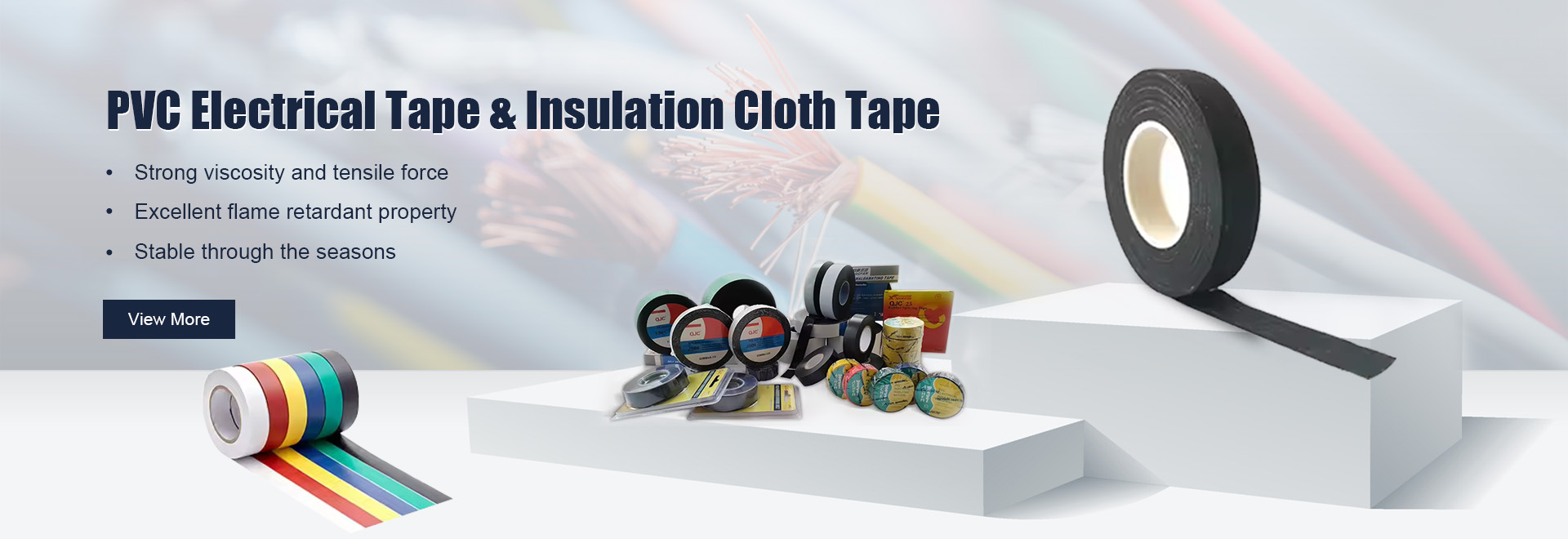The Versatility of 130C Rubber Splicing Tape
In the world of electrical insulation and general-purpose repairs, few materials offer the versatility and reliability of 130C rubber splicing tape. This type of tape is burgeoning in popularity due to its wide range of applications, particularly in industries that require secure and effective insulation under various conditions.
What is 130C Rubber Splicing Tape?
130C rubber splicing tape is a premium-grade electrical tape known for its impressive temperature resistance and durability. With a rated maximum temperature of 130 degrees Celsius (or approximately 266 degrees Fahrenheit), it is suitable for use in environments where typical tapes may fail. This characteristic makes it an ideal choice for automotive, aerospace, and industrial applications, where equipment must endure extreme conditions.
The tape is often made from high-quality, flexible rubber compounds that ensure excellent conformability over irregular surfaces. Additionally, it typically features a self-fusing design, which means that it adheres to itself rather than sticking firmly to the surfaces it encases. This self-fusing ability not only enhances its insulating properties but also facilitates ease of removal and reapplication.
Applications
One of the primary uses of 130C rubber splicing tape is in insulating electrical connections. This functionality is crucial for preventing electrical shorts, protecting from moisture intrusion, and maintaining operational integrity in electrical systems. Whether it’s used for rewrapping wires on a DIY project or providing temporary fixes in commercial designs, 130C tape remains the go-to solution for many professionals.
Beyond electrical applications, 130C rubber splicing tape also excels in mechanical bonding and sealing. Its high tensile strength and excellent resistance to chemicals make it ideal for ductwork, plumbing repairs, and automotive applications. Professionals appreciate its ability to provide a waterproof seal, making it invaluable in environments exposed to moisture or harsh elements.
Advantages
130c rubber splicing tape

The appeal of 130C rubber splicing tape lies in several key advantages
1. High Temperature Resistance With a rating of up to 130 degrees Celsius, this tape can withstand significant heat, ensuring durability in high-temperature environments. 2. Self-Fusing Properties The ability of the tape to fuse to itself provides a seamless, waterproof seal that prevents leaks and enhances electrical insulation.
3. Flexibility and Conformability Its flexible nature allows it to wrap around various shapes and surfaces, creating a tight seal that effectively conforms to irregularities.
4. Chemical Resistance This tape is often resistant to oils, solvents, and other chemicals, adding to its versatility in various industrial applications.
5. Ease of Use The tape can be applied quickly and easily, making it a favorite among professionals and DIY enthusiasts alike.
Conclusion
In a world where reliability and performance are paramount, 130C rubber splicing tape stands out as an extraordinary solution for numerous applications. Its ability to provide robust insulation, mechanical bonding, and protection in extreme conditions makes it indispensable in various industries. Whether you are an electrical engineer working on complex circuits or a homeowner tackling a DIY project, investing in quality splicing tape can lead to long-lasting results and peace of mind.
Overall, it’s not just its temperature rating that elevates 130C rubber splicing tape. It is the culmination of its unique features, versatility, and reliability that solidifies its status as a vital tool in any toolkit. As technology evolves and industries demand higher performance from their materials, the applications and importance of rubber splicing tape are sure to expand even further. Embracing this versatile product not only simplifies processes but also enhances the quality and safety of repairs and installations across various fields.
-
XIANGFAN Rubber Tape-Ultimate Solutions for All Your Insulation NeedsNewsJun.24,2025
-
XIANGFAN Rubber Tape-Protection for Industrial and Residential ApplicationsNewsJun.24,2025
-
XIANGFAN Rubber Tape: Superior Safety and Sealing for Demanding EnvironmentsNewsJun.24,2025
-
XIANGFAN Rubber Tape: Reliable Solutions for Every Electrical ChallengeNewsJun.24,2025
-
XIANGFAN Electrical & Industrial Tape: Powering Reliability Across IndustriesNewsJun.24,2025
-
XIANGFAN Electrical & Industrial Tape: Excellence in Every ApplicationNewsJun.24,2025
